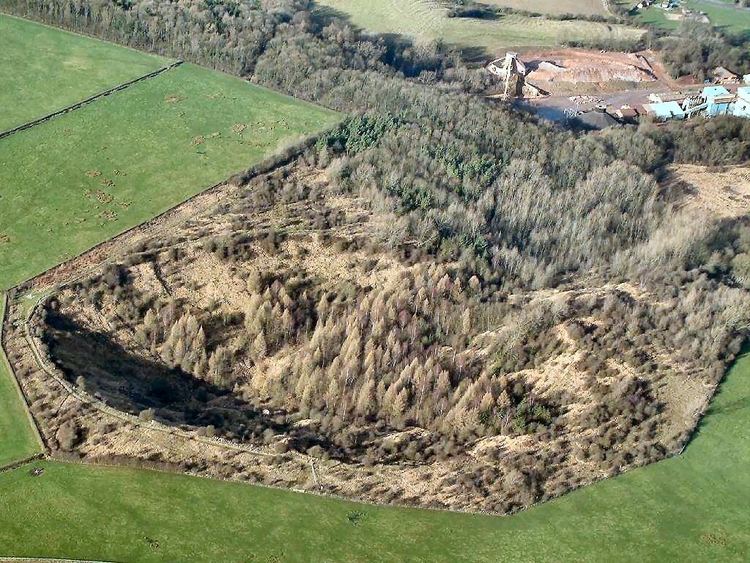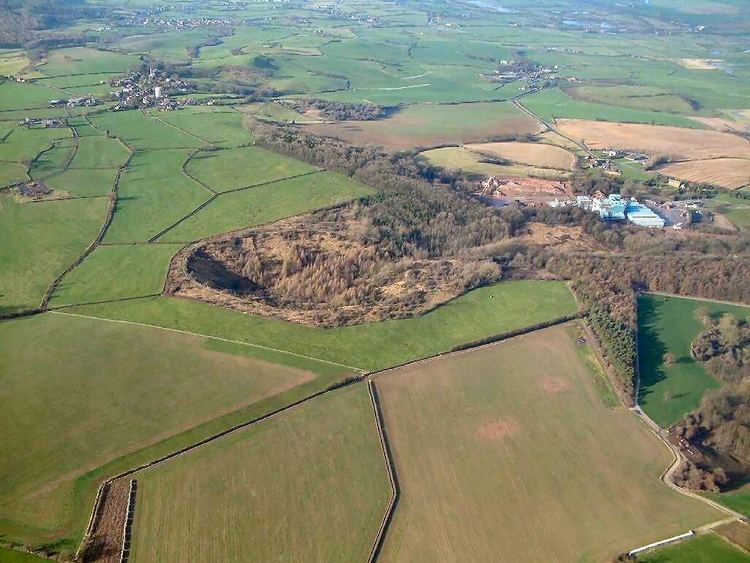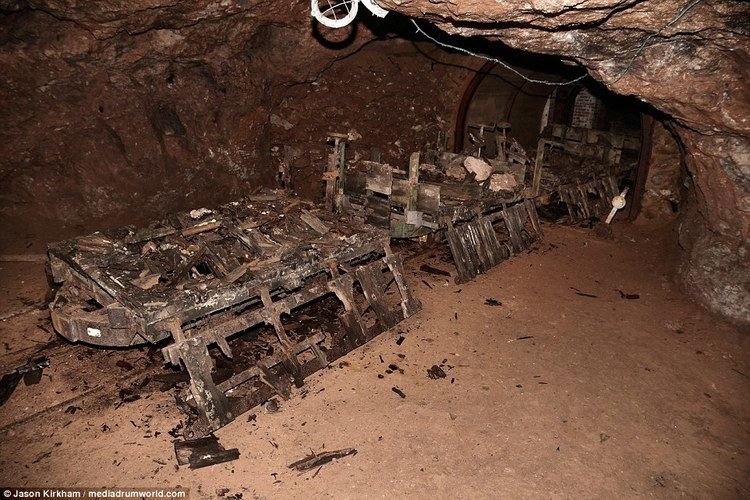Date 27 November 1944 | ||
 | ||
Similar Port Chicago disaster, Oppau explosion, Benton fireworks disaster, PEPCON disaster, Seest fireworks disaster | ||
The RAF Fauld explosion was a military accident which occurred at 11:11am on Monday, 27 November 1944 at the RAF Fauld underground munitions storage depot. The RAF Fauld explosion was one of the largest non-nuclear explosions in history and the largest to occur on UK soil.
Contents

Between 3,500 and 4,000 tonnes of ordnance exploded—mostly comprising high explosive (HE)-filled bombs, but including a variety of other types of weapons and including 500 million rounds of rifle ammunition. The explosion crater with a depth of 300 feet (91 m) and 250 yards (230 m) across is still clearly visible just south of the village of Fauld, to the east of Hanbury in Staffordshire, England. It is now known as the Hanbury Crater. A nearby reservoir containing 450,000 cubic metres of water was obliterated in the incident, along with a number of buildings including a complete farm. Flooding caused by destruction of the reservoir added to the damage directly caused by the explosion.

The exact death toll is uncertain; it is believed that about 70 people died in the explosion.
Cause

The cause of the disaster was not made clear at the time. However, there had been staff shortages, a management position that had remained empty for a year, and 189 inexperienced Italian POWs were working in the mines at the time of the accident. In 1974, it was announced that the cause of the explosion was probably a site worker removing a detonator from a live bomb using a brass chisel rather than a wooden batten. An eyewitness testified that he had seen a worker using brass chisels in defiance of the strict regulations in force.
Effects
Two huge explosions were witnessed at No. 21 Maintenance Unit RAF Bomb Storage dump on 27 November 1944 at 11:15 hours. Eyewitnesses reported seeing two distinct columns of black smoke in the form of a mushroom cloud ascending several thousand feet, and saw a blaze at the foot of the column. According to the Commanding Officer of 21 M.U. (Group Captain Storrar) an open dump of incendiary bombs caught fire and it was allowed to burn itself out without damage or casualties. Property was damaged within a radius of ¾ mile of the crater.
Debris and damage occurred to all property within a circle extending for 1,420 yards (1,300 m). Upper Castle Hayes Farm completely disappeared and Messrs. Peter Ford's lime and gypsum works to the north of the village and Purse cottages were completely demolished. The lime works was destroyed by the destruction of the reservoir dam and the subsequent release of water into the works. Hanbury Fields Farm, Hare Holes Farm and also Croft Farm with adjacent cottages were all extensively damaged. Debris also damaged Hanbury village. The crater was some 300 yards (270 m) by 233 yards (213 m) in length and 100 feet (30 m) deep covering 12 acres. Approximately one third of the RAF dump exploded, an area of 65,000 square yards, but barriers of rock pillars between No. 3 and No. 4 sections held and prevented the other munition storage areas from exploding in a chain reaction. Damage from earth shock extended as far as Burton upon Trent.
Casualties
At the time, there was no careful tally of the number of workers at the facility. So, while the exact death toll is uncertain, it appears that about 70 people died in the explosion. The official report said that 90 were killed, missing or injured, including:
Also 200 cattle were killed by the explosion. A number of live cattle were removed from the vicinity but were dead the following morning.
Aftermath
While much of the storage facility was annihilated by the explosion, the site itself continued to be used by the RAF for munitions storage until 1966, when No. 21 Maintenance Unit (21 MU) was disbanded. Following France's withdrawal from NATO's integrated military structure in 1966, the site was used by the US Army, between 1967 and 1973, to store US ammunition previously stored in France.
Burton-on-Trent Library has a documented file on the explosion.
By 1979 the site was fenced off and since then nature has taken over, with the area covered with over 150 species of trees and wildlife. The area is restricted as a significant amount of explosives are still buried deep in the site; the UK government has deemed their removal unfeasible on the grounds of cost.
No. 21 MU was the subject of a number of paintings under the collective title "the bomb store" by artist David Bomberg. He was briefly employed as a war artist by the War Ministry in 1943.
